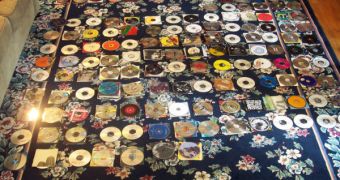Acquiring and hoarding various types of objects is a behavior in which many humans are engaged. In fact, almost every person on the planet collects something, from pins and stamps, to yachts and rare artifacts. But there are those who collect and hoard them compulsively. These individuals, whom mental-health experts have termed “compulsive hoarders,” will go to great lengths to satisfy their needs, including spending ridiculously large amounts of cash on their collectibles, or alienating their friends and family, LiveScience reports.
According to healthcare experts, the condition is best classified as a form of obsessive-compulsive disorder (OCD), a condition that can even grow to be as complex as to cut individuals off from society, and even endanger lives. Psychiatrists classify the condition as a pathological brain disorder, although there are some who argue that compulsive hoarding is similar to bad planning and disorganization. Though that idea gained some merit a while ago, it is currently being set aside, in favor of a more scientific approach. Scientists say that, oftentimes, the condition can be a clear indicator of other afflictions, such as the impulse control disorder or the attention-deficit hyperactivity disorder (ADHD).
“People with this problem tend to have a first-degree relative who also does. So it might be genetic, or it might be a modeling effect,” psychologist Randy O. Frost, PhD, from the Smith College in Northampton, Massachusetts, says. Experts do not yet know if certain DNA combinations have something to do with the onset and development of the condition. They say that life-altering experiences, for instance, can lead to people beginning to hoard stuff compulsively from there on. A number of studies has looked at the genetic background of compulsive hoarding, but has found no clear correlations.
“Something at chromosome 14 may be associated with hoarding. This could be a dramatic breakthrough in our understanding of hoarding. However, it is important to note that these studies are all preliminary with relatively small samples that don’t fully represent the range of hoarding in the population. Furthermore, we also don’t yet understand just what traits might be heritable. Perhaps it is something that underlies hoarding, like decision-making problems, and not hoarding itself that is inherited,” Smith College expert Randy Frost explains in a 2007 New England Hoarding Consortium Newsletter paper.

 14 DAY TRIAL //
14 DAY TRIAL //